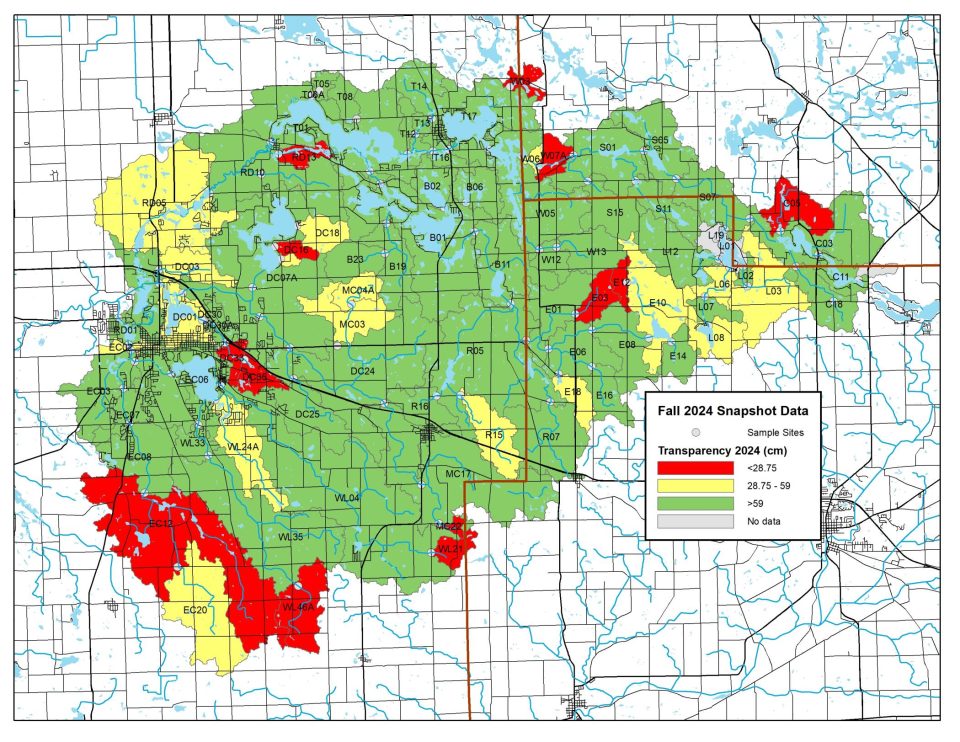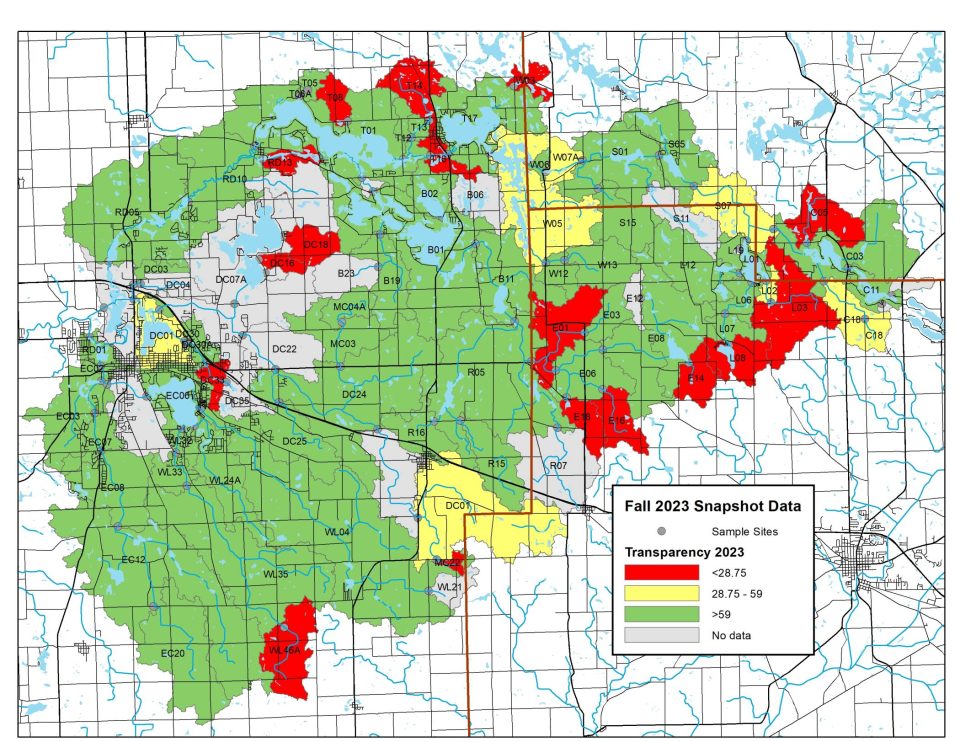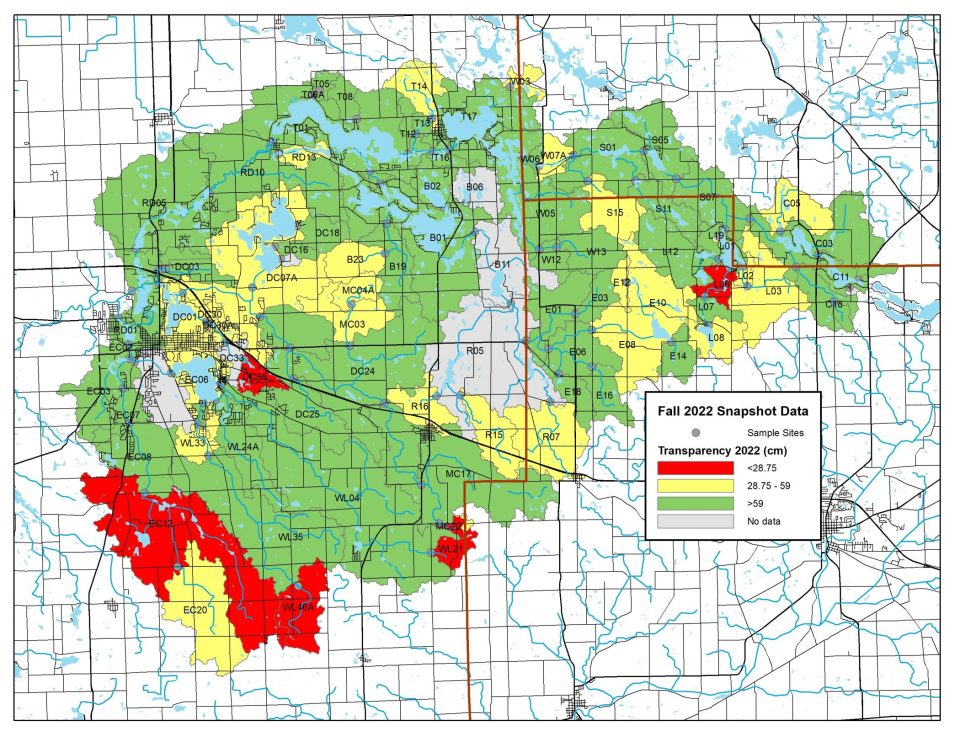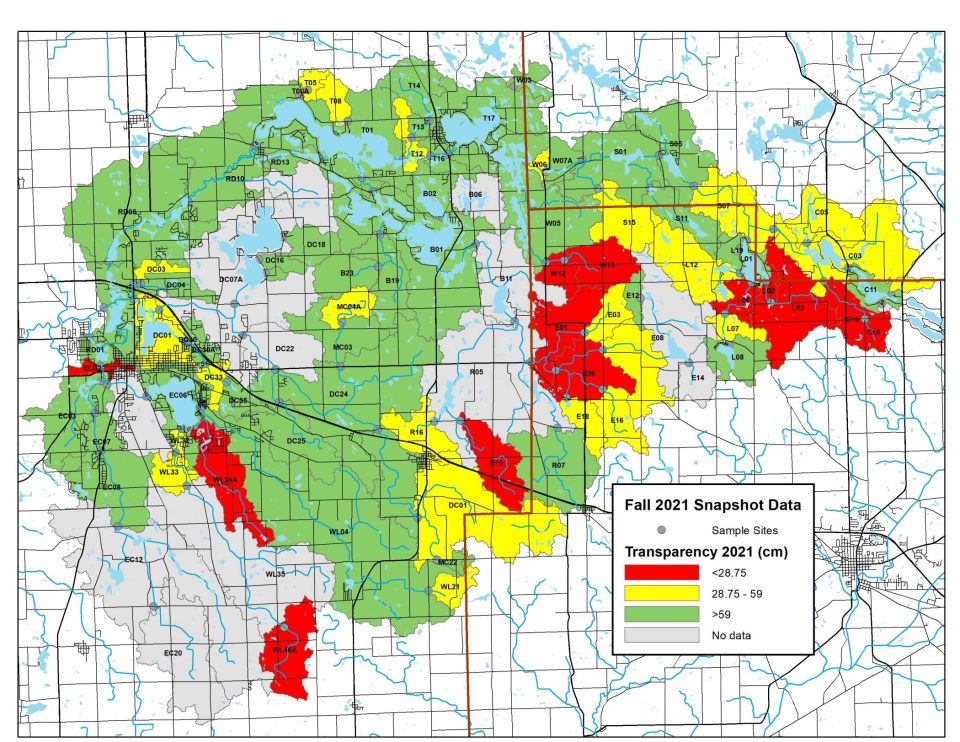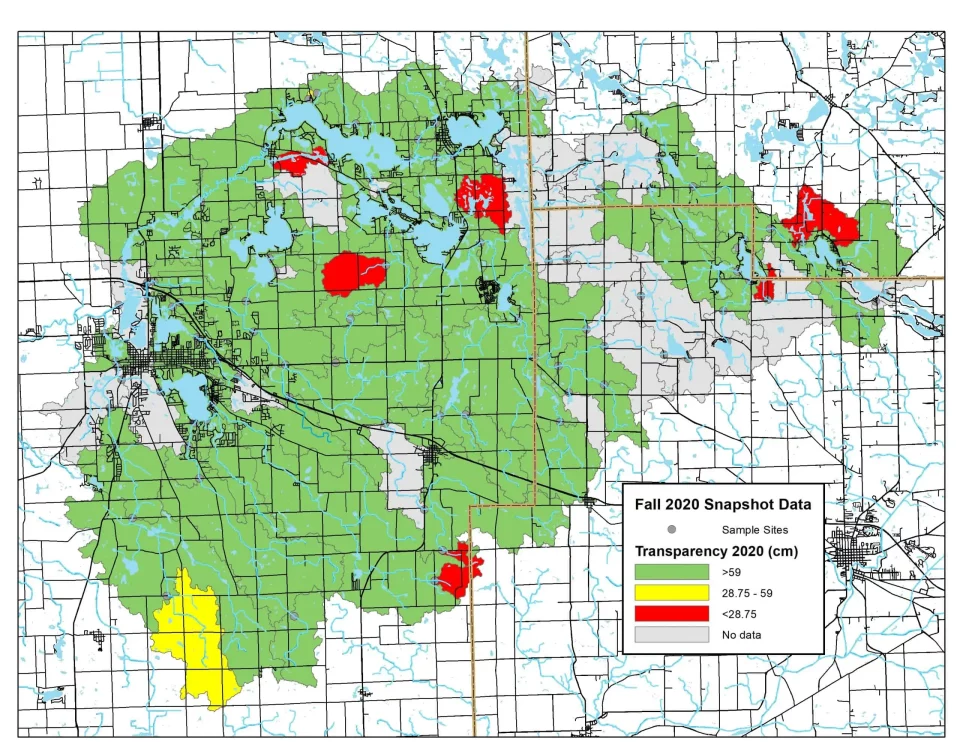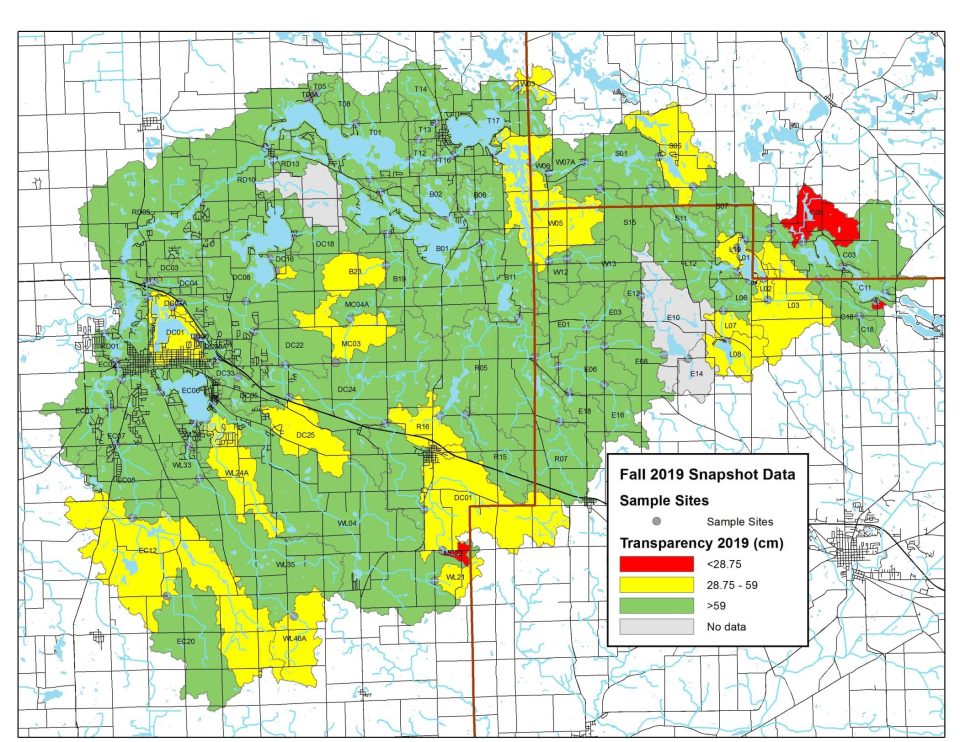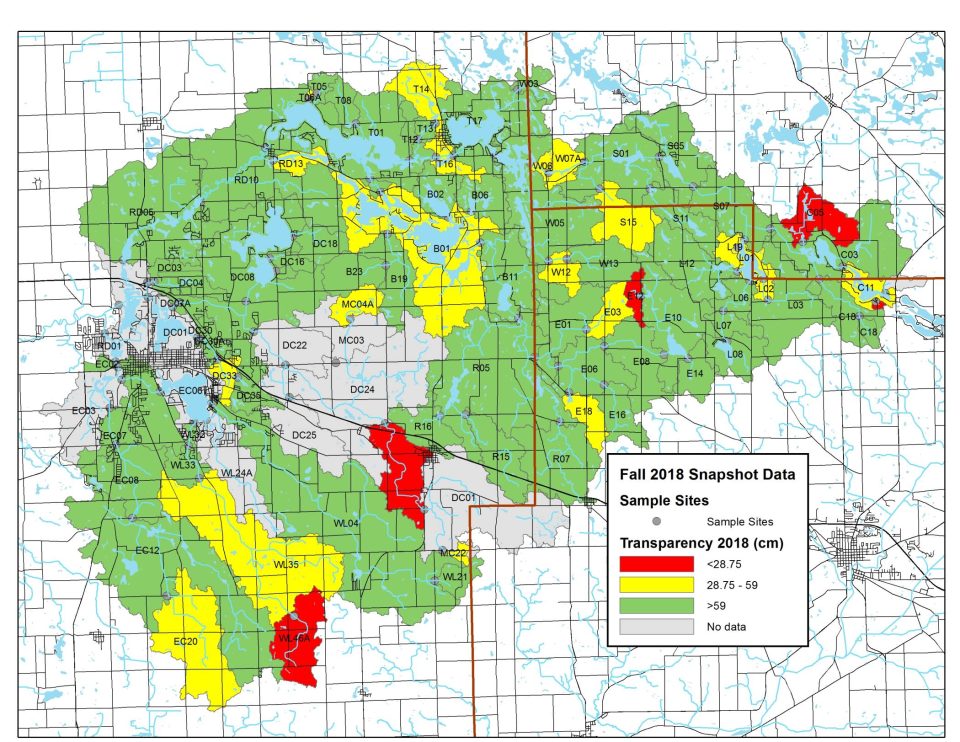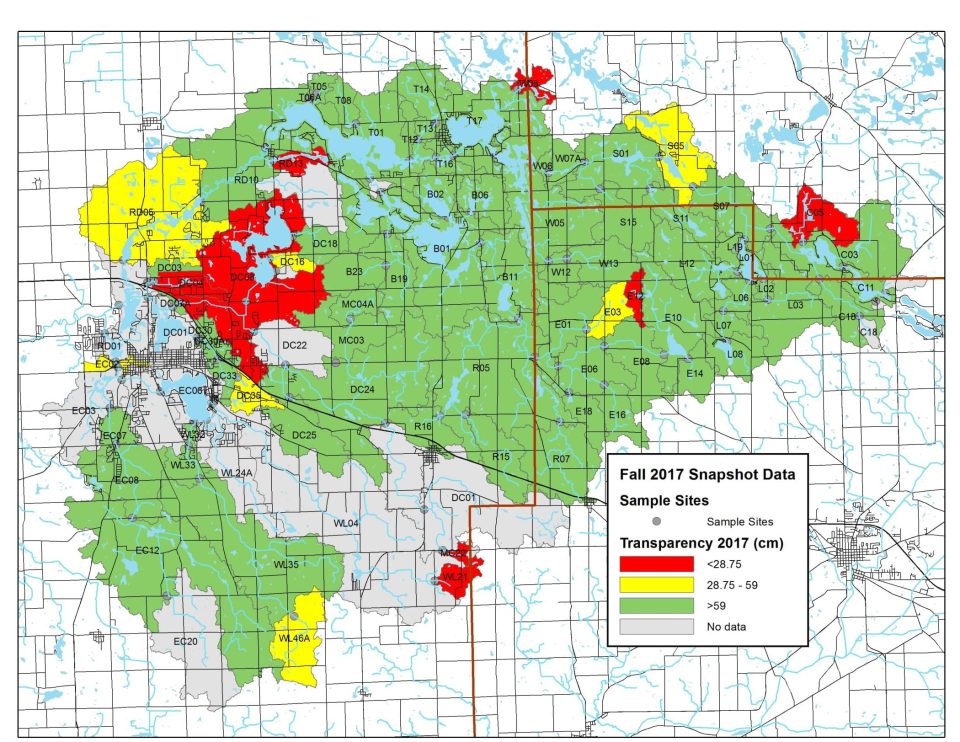Snapshot Day Results: Transparency
See Full Monitoring Results and Maps Below
Transparency tells us a lot about water quality.
When rain falls, water drains off the land, collecting loose soil (sediment) and other pollutants as it goes, carrying it into the nearest creek or river and eventually into our lakes. Sediment collects on the bottom of lakes and streams, reducing their depth and affecting their overall health. Transparency reflects how deep down we can see through the water. The deeper we can see, the less particles of sediment and/or algae are present. Poorer transparency indicates more particles, and the water may appear cloudy instead of clear.
On Snapshot Water Monitoring Day, volunteers measure transparency at sites across our watershed. While there have been areas of moderate to critical concern over the last several years, transparency levels across the watershed are generally within a normal, healthy range.
Explore full results below. Click on any map to zoom in.
2024 Transparency Results
In 2024, transparency across the watershed declined slightly from the previous year. Although levels were generally good, we found several areas of moderate to critically low transparency, with the greatest concentration in the lower watershed.
This was likely due to a long period of drought leading up to Snapshot Water Monitoring Day. In drought conditions, water levels drop. So does the rate of water flow. Without flowing water to flush it through, sediment builds up, reducing water clarity (transparency) and affecting aquatic habitats.
2023 Transparency Results
In 2023, transparency across the watershed was generally good, with several areas areas of moderate to critically low transparency.
2022 Transparency Results
In 2022, transparency across the watershed was generally good, with a few areas areas of moderate to critically low transparency.
2021 Transparency Results
In 2021, we found several areas of moderate to critically poor transparency across the watershed, with the greatest concentrations in the upper and eastern portion of the watershed
2020 Transparency Results
In 2020, transparency across the watershed was generally good, with a few small areas of low to moderate transparency.
2019 Transparency Results
2019 monitoring found just two areas of critically low transparency, but slightly more moderate levels than the previous year.
2018 Transparency Results
In 2018, we found several areas of moderate to critically poor transparency across the watershed.
